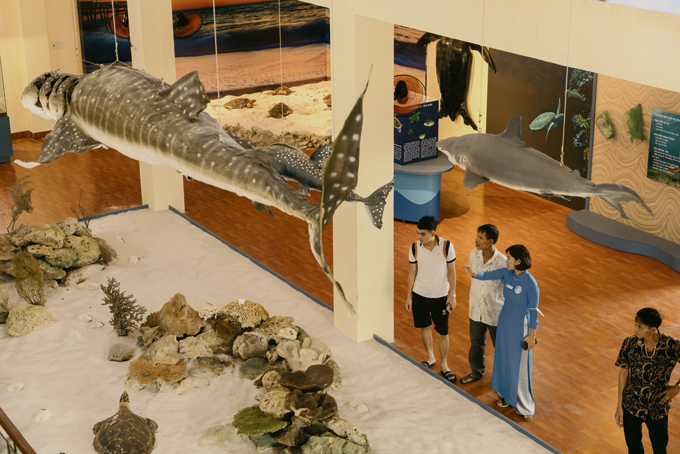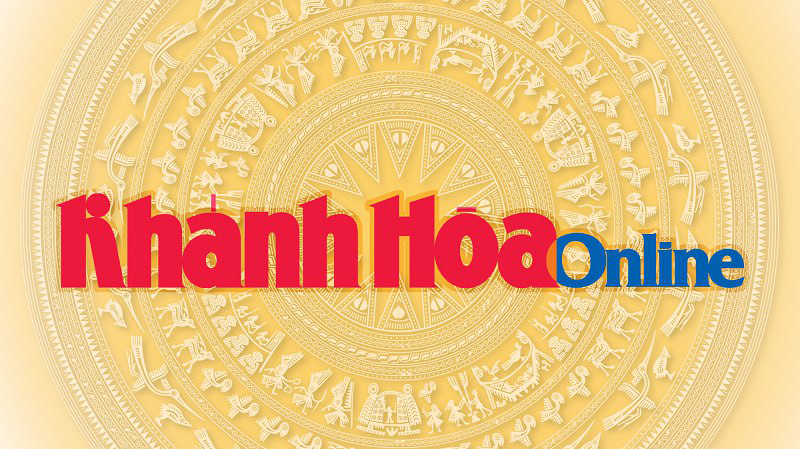
With the opening of a marine biodiversity display area connected to the mountain tunnel of the marine resource exhibition of Spratly and Paracel Islands, the Institute of Oceanography is renewing its display area to attract more visitors and boost marine biodiversity propaganda...
With the opening of a marine biodiversity display area connected to the mountain tunnel of the marine resource exhibition of Spratly and Paracel Islands, the Institute of Oceanography is renewing its display area to attract more visitors and boost marine biodiversity propaganda, contributing to affirming Vietnam's marine sovereignty.
Impressive display
The Institute of Oceanography has just opened a 3-storey marine display area, 600m2, featuring ten thousands of samples of marine specimens together with information about marine diversity in Vietnam. The display area simulates habitats and spawning grounds of sea turtles, Vietnamese sea snakes, mollusks and coral reef models. Thousands of seaweed samples are skillfully turned in the shape of lionfish, the symbol of the Institute of Oceanography. Especially, the collections of marine specimens are created in shapes of various creatures. This is the place for the exhibition and preservation of Vietnam’s largest collection of marine species with nearly 27,000 samples of 6,000 species collected since the foundation of the institute (in 1922).

|
Particularly, the site is connected with the underwater world tunnel though mountains showcasing marine resources of the Spratly and Paracel Islands. The tunnel,128m long and 8-12m wide, was built in the 1930s by French people to transport goods from Nha Trang Port to Canh Long Mountain where Bao Dai Place is situated.
It comprises of 6 large tanks with a capacity of up to 165m3. Themed “Ocean Vigor”, the large tanks feature the lure of the ocean world with unique ecosystem of Vietnam’s sea, islands and the Spratly and Paracel Islands. The aquarium showcases vast range of marine species such as Balistes, Chaetodontidae, Diagramma pictum, Labridae, coral reefs, etc. The most impressive is perhaps a 25m tunnel where large and potentially dangerous organisms such as sharks and rays can be seen.
Biodiversity propaganda
According to Ph.D. Nguyen Xuan Vy, Chief of the Botany Department, Institute of Oceanography, it takes nearly a year for the staff to create a large collection of transparent specimens which contain 70 species of 3 seaweed specimens (red, green, brown), showcasing the diversity of coastal seaweed in Vietnam. The model of Pterois volitans contains of up to 70 species of coral reefs.
The water world tunnel featuring natural marine resources of the Spratly and Paracel Islands is elaborately designed and built to introduce marine biodiversity to visitors, according to M.A Ho Son Lam, Deputy Chief of the Department of Aquaculture Technology, the Institute of Oceanography.
According to PhD. Truong Si Hai Trinh, Chief of the Department of Communication and Environmental Education, Institute of Oceanography, the collections and constructions play an important role in the propaganda and education of marine biodiversity, especially marine biodiversity of Vietnam’s Spratly and Paracel Islands. With tens of thousands of specimens and relevant information, images and documents, the works have vividly depicted Vietnam's marine biodiversity, thereby educating patriotism and raising sovereignty protection among the young generation. The marine biodiversity display area with transparent specimens promises to add to stunning views of marine life and boost marine biodiversity propaganda.
V.L
Translated by N.T










